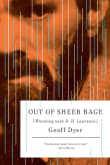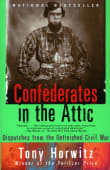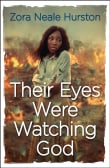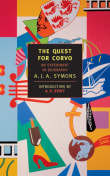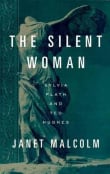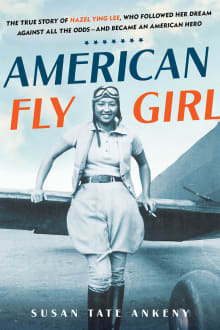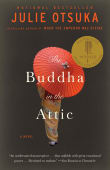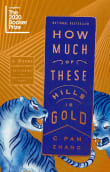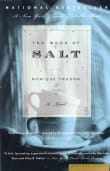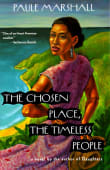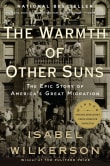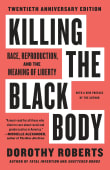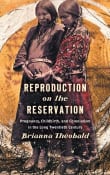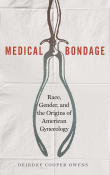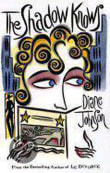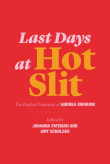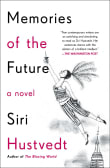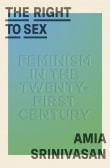Wayward Lives, Beautiful Experiments
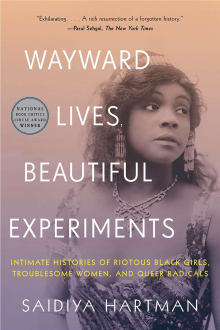
Book description
Beautifully written and deeply researched, Wayward Lives, Beautiful Experiments examines the revolution of black intimate life that unfolded in Philadelphia and New York at the beginning of the twentieth century. In wrestling with the question of what a free life is, many young black women created forms of intimacy and…
Why read it?
11 authors picked Wayward Lives, Beautiful Experiments as one of their favorite books. Why do they recommend it?

I haven’t recovered yet from the way Hartman recovers the lives of young Black women through historical photographs. The images were made to rob these women of their individuality, make them fit “types,” letting them say Nothing about themselves.
But Hartman writes like she’s talking to them, and they’re wonderful. She messes with categories used by authorities who thought they “knew” these women by their transgressions. I was utterly transfixed by how she imagined these women’s lives and loves in the ordinary stairways and back alleys they called home.
The photos are gorgeous. You could talk about them for days…
From Susan's list on books about Nothing, in particular: because Nothing always means Something.

This book made me reflect deeply on whom we praise as trailblazing “rebels” and who we ignore, erase, or brand with criminal status in the stories we inherit and then repeat thoughtlessly.
Hartman reimagines “transgression” through the lenses of race, gender, sexuality, and class in early 20th-century New York and Philadelphia. She immerses us in up-close and poignant stories of women’s nonconformity, showing how their choices were flexes not only for survival but for thriving, a refusal to be defined by the ugliest social denigrations of their time (as well as our own).
Wayward Lives is richly sourced, including recovered…
From Jo's list on nonfiction that reclaim lost history or silenced voices.

Behind the scenes, historians recognize that our writing involves conjecture—interpretation of evidence whose meaning is subject to debate—but rarely do we let readers in on that aspect of our work.
Not so Saidiya Hartman, whose books always make clear how she has transformed fragments of evidence into coherent stories. In Wayward Lives, Beautiful Experiments, the stories center on the brave and creative ways that young Black working women who migrated to northern cities in the early twentieth century defied limitations imposed on them by families, partners, employers, social workers, and the criminal justice system.
The book inspires me not…
From Priscilla's list on labor history bringing personal stories to life.
If you love Wayward Lives, Beautiful Experiments...

Hartman is one of those academic writers who write like novelists or poets; this is a good thing, because her material is the history of the marginalized, people pushed to the margins of history, so that often the only traces left of them are some entries in police or workhouse or hospital records. How to make those records speak and live again? Daringly, Hartman allows herself the poetic license to imagine in the gaps and silences. What results is a Black history/story that renders visible the unrecorded anarchic rebellions of Black women at the turn of the century, seeking out…
From Jesse's list on how might one live an anarchist life.

A dear friend recommended this book to me when we discussed how the fallibility of memory creates space for as-yet-untold or un-recorded histories. Hartman’s brilliant book levers open a treasure of Black women’s experiences; they are in charge of powerful, lived, realness. In this book, Hartman’s deep research and her enormous capacity for exquisite writing attends to the radical desires of young Black women, complicating received histories and claiming space for the re-inscription of these stories within the public imaginary.
From Laura's list on reimagining the present.

When I first read this book, I thought “This is the book I’ve been waiting for!” Focused on New York and Philadelphia at the beginning of the 20th century, it explores the intimate lives of Black women who have been largely invisible in Black women’s history: girls and women who did not fit the definitions of Black “respectability.” Using sources in ways creative and thrilling, it explores how those women imagined a “free life” within a world shaped by racism, sexual abuse, single motherhood, and economic insecurity. Sometimes their new forms of intimacy involved “ordinary refusals”—to follow…
From Lori's list on that will blow your mind about US women’s history.
If you love Saidiya V. Hartman...

I’d heard a great deal of praise of Hartman’s book from artists and other colleagues, which stoked my curiosity about its hybrid form—a blend of archival research and fictional narrative. It’s a tricky combination that Hartman manages with unerring aplomb, making it seem not only viable but essential for understanding a world lost to history. Her portraits of Black women living under fairly desperate conditions in New York and Philadelphia in the first decades of the twentieth century—of the personal and practical choices they made—are precise, vivid, rousing, And I do understand why artists love Hartman: she understands that not…
From Nancy's list on putting sexual assault in perspective.

This is just simply a beautiful, powerful, unique -- poetic -- book about the lives of Black women at the beginning of the 20th century in New York and Philadelphia, women who crafted their own lives, in contexts heavy with coercions and degradations. Hartman is an extraordinary writer and a gorgeous thinker.
From Rickie's list on why we need reproductive justice.

Hartman’s work of non-fiction is lyrical, breathtaking, and brave. She tells about the lives of young black women in Harlem in early 1900, from their point of view and from a point of view of agency and empowerment. She speaks of them as having made choices, not as victims. This book gave me permission to write the book I wanted to write when I wrote The Nine. Her opening “A Note on Methods” is worth reading as its own text. She challenges the limitations of the archives for the marginalized. And she allows us to imagine our way into…
From Gwen's list on by African American and Caribbean female writers.
If you love Wayward Lives, Beautiful Experiments...

“Critical fabulation”—that’s what literary scholar Saidiya Hartmann calls this book’s weave of personal, experiential, imagined, and archival elements. The form springs from the impossibility of ever fully recovering the stories of African American women through archival records. For Hartman the archive is as much about what it doesn’t contain as what it does.“Critical fabulation” is a response to those absences, a way of telling stories that concede the limits of the known and uses the imagination as a kind of restorative justice. The focus here is on young women living in Harlem in the first decades of the 20…
From Jasmin's list on reimagining BIPOC history.
Want books like Wayward Lives, Beautiful Experiments?
Our community of 12,000+ authors has personally recommended 100 books like Wayward Lives, Beautiful Experiments.



